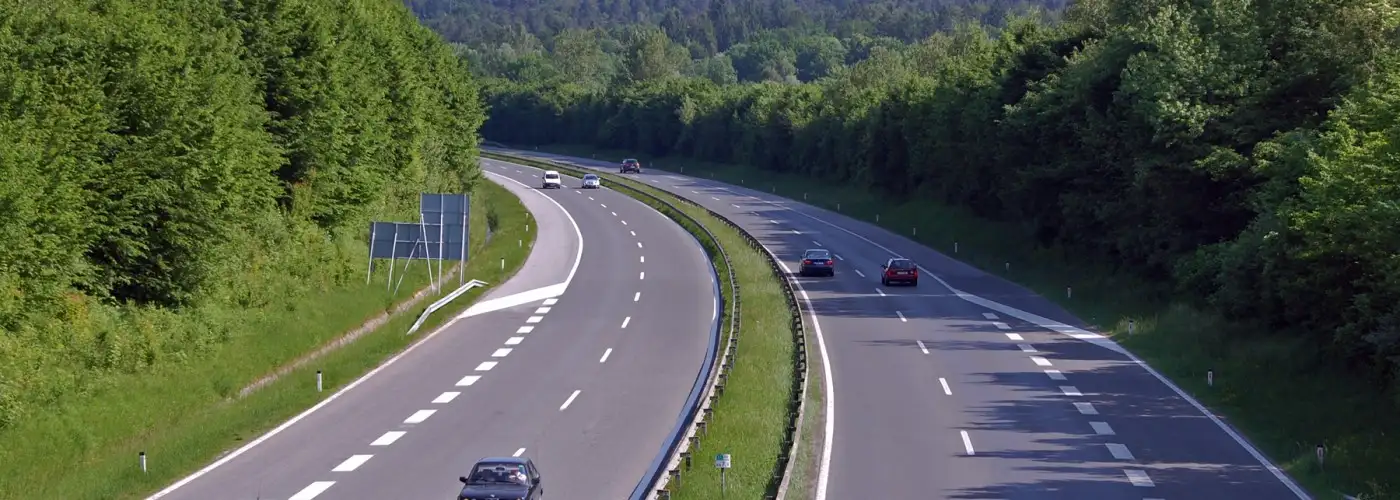Driving in Europe can be scary—a video game for keeps, and you only get one quarter. European drivers can be aggressive. They drive fast and tailgate as if it were required. They pass where Americans are taught not to—on blind corners and just before tunnels.
For Americans stressed out about driving in Europe, expressways and toll roads are the answers. I favor them because they’re safer, cheaper (saving time and gas even if there is a toll), and less nerve-wracking than smaller roads. Sure, you’ll need to take back roads to find some Back Door destinations, but usually superhighways are the fastest way to get from point A to point B. Here are some tips on what to expect.
Germany: The toll-free autobahns in Germany are famous for having no speed limits, but some sections actually do have a maximum speed, particularly in urban areas and complicated interchanges. In areas without an “official” speed limit, you will commonly see a recommended speed posted. While no one gets a ticket for ignoring this recommendation, exceeding this speed means your car insurance no longer covers you in the event of an accident.
Obstructing traffic on the autobahn is against the law—so running out of gas is not only dangerous, it can earn you a big ticket. In fast-driving Germany, the backed-up line caused by an insensitive slow driver is called an autoschlange, or “car snake.” What’s the difference between a car snake and a real snake? According to locals, “On a real snake, the ass is in the back.”
France: Most of the autoroutes in France have tolls (the exception is in Brittany). While the tolls are pricey, the alternative to these super “feeways” is usually being marooned in countryside traffic—especially near the Riviera.
But paying the tolls can be tricky. At many tollbooths, American credit cards are not accepted unless they have a smart chip (what Europeans call “chip-and-PIN” cards). Use cash—it’s best to have smaller bills, since the automated machines won’t take €50 bills and often there aren’t any cashiers. At pay points, avoid booths showing only “Telepeage” or a credit-card icon. Look instead for green arrows above the tollbooth or icons showing bills, which indicate they accept cash.
Road speeds are monitored regularly with speed cameras (a mere two kilometers over the limit gets a pricey ticket). The good news is that drivers are usually warned first. Look for a sign with a radar graphic that says, “Pour votre securite, controles automatiques.” Anyone caught driving over the limit will be fined a minimum of about $180.
Italy: Italy’s expressway system, the autostrada, is as good as our interstate system, but you’ll pay about a dollar for every 10 minutes of use. (I paid about $25 for the four-hour drive from Bolzano to Pisa.) As in France, U.S. credit cards may not work at tollbooths—avoid the “Telepass” and “Carte” lanes and use cash.
The speed limit on autostradas is 130 kilometers per hour, but sometimes it can be lower, so watch the signs carefully. There are hidden speed cameras, and if you’re caught speeding, the car-rental agency must give the police your contact information. If you get caught, Italian bureaucrats have up to a year to mail you the ticket—no kidding.
And in Italy, there are unexpected distractions. If you’re on a truckers’ route, stifle your Good Samaritan impulse when you see provocatively dressed women standing by RVs at the side of the road; they’re not having car trouble.
Great Britain: In Britain, the freeways are called motorways—and they really are free. Everything is in English, but you have to remember that you’re driving on the left. Unless you’re passing, stay in the “slow” lane on motorways (the lane farthest to the left). The British are very disciplined about this; ignoring this rule could get you a ticket (or into a road-rage incident). Remember to pass on the right, not the left. Know the cities you’ll be lacing together, since road numbers can be inconsistent.
Wherever you go, relax and enjoy the ride. When you take a break at the rest areas, watch how Europeans behave while on vacation (you’ll be surprised at the quality of the food at French and Italian stops). If you miss your exit, go with the flow. That next town down the road may be a charming, undiscovered gem left out of all the guidebooks. Europe’s superhighways can be part of a super vacation. Think positively, travel smartly, adapt well, and connect with the culture—you’ll have a truly rich road trip.
Rick Steves (www.ricksteves.com) writes European travel guidebooks and hosts travel shows on public television and public radio. Email him at [email protected] and follow his blog on Facebook.
“(Photo: Cameron Hewitt)
You Might Also Like:
- Fall Rail Round-Up
- Final Thoughts on a European Vacation
- Seniors on the Go: Notes from a European Driving Trip
We hand-pick everything we recommend and select items through testing and reviews. Some products are sent to us free of charge with no incentive to offer a favorable review. We offer our unbiased opinions and do not accept compensation to review products. All items are in stock and prices are accurate at the time of publication. If you buy something through our links, we may earn a commission.
Related
Top Fares From
Today's Top Travel Deals
Brought to you by ShermansTravel
Kenya: 14-Night Tour, Incl. Tanzania &...
smarTours
 vacation
$7125+
vacation
$7125+
7-Night Caribbean Round-Trip Cruise From Orlando:...
Norwegian Cruise Line
 cruise
$739+
cruise
$739+
Ohio: Daily Car Rentals from Cincinnati
85OFF.com
 Car Rental
$19+
Car Rental
$19+




